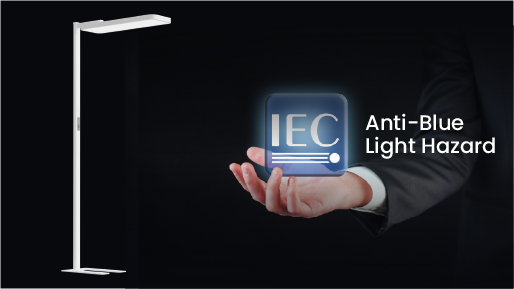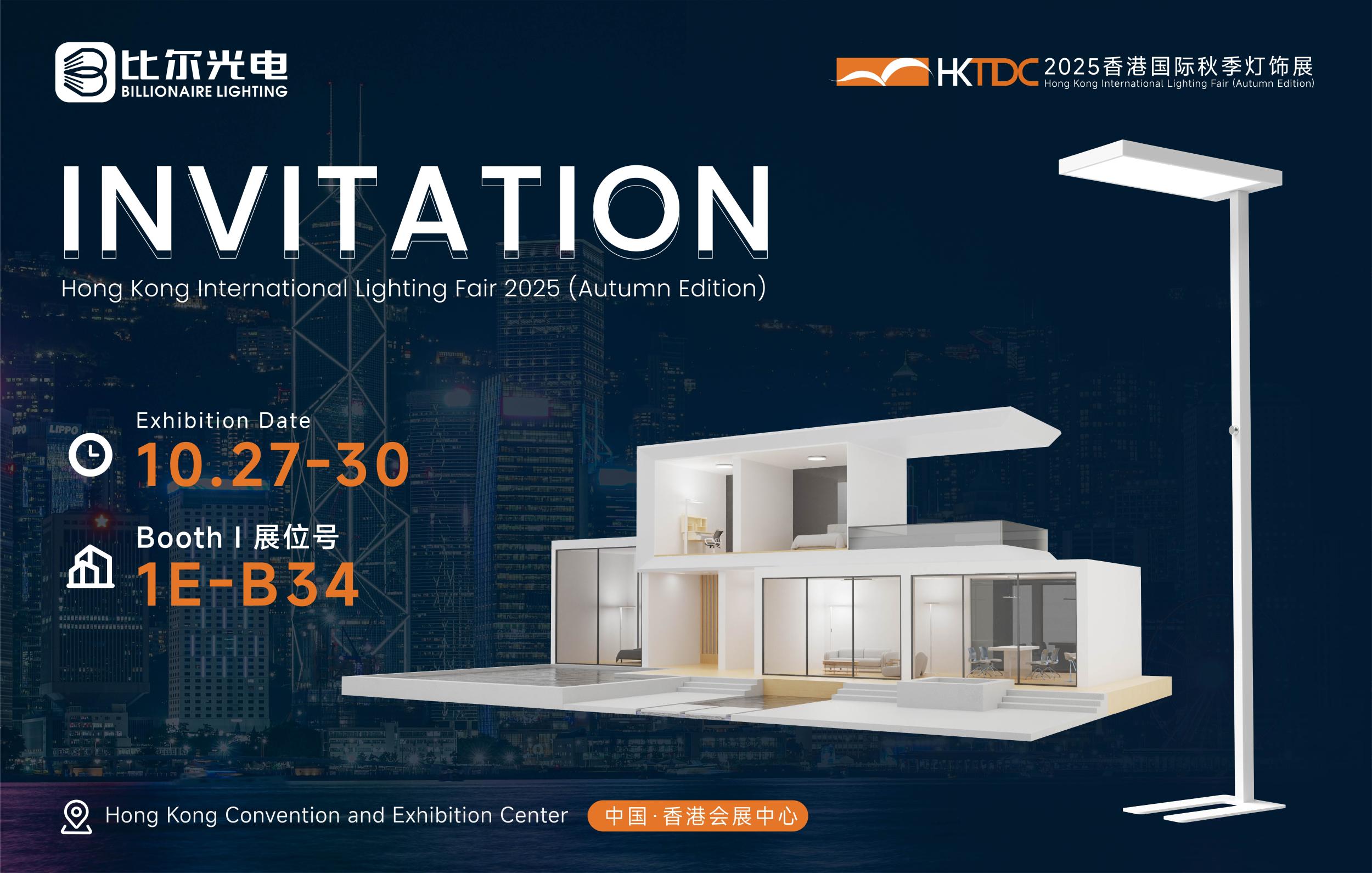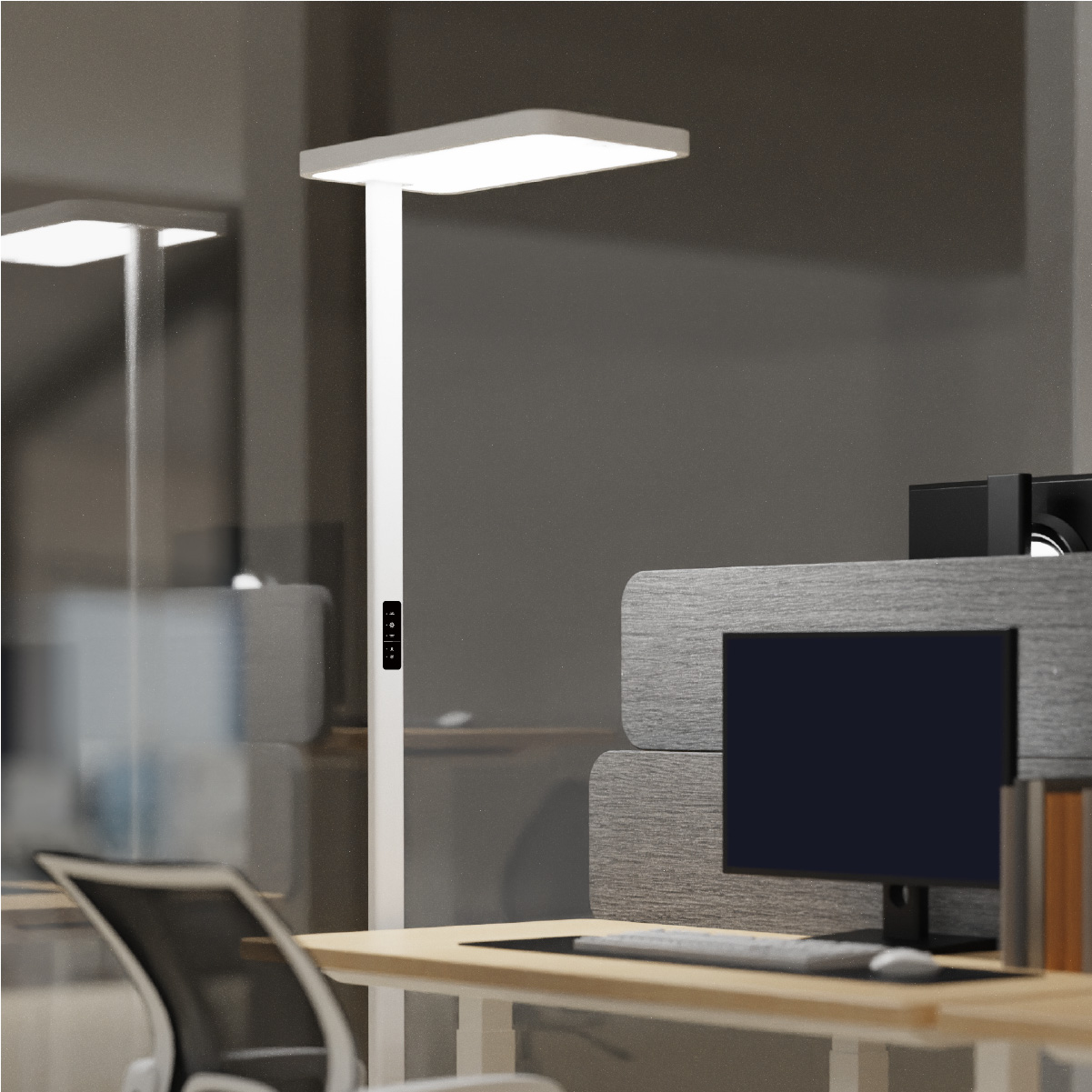Introduction
In the contemporary office environment, whether it's a bustling corporate cubicle or a home - based workspace, the desktop office light has emerged as an indispensable tool. It goes beyond merely providing illumination; it significantly impacts productivity, eye health, and overall work comfort. A well - chosen desktop office light can transform a mundane work area into a conducive space for concentration and creativity. This article will comprehensively explore the various aspects of desktop office lights, including their types, features, benefits, and how to select the most suitable one for different office setups.
Types of Desktop Office Lights
Task - Oriented Desk Lamps
Task - oriented desk lamps are the most common type of desktop office lights. These lamps are designed with a primary focus on providing targeted illumination for specific work tasks. They typically feature a flexible neck or an adjustable arm, allowing users to direct the light precisely where it is needed. For instance, in a graphic design studio, an artist may need to light up a detailed drawing or a computer screen. A task - oriented desk lamp with a long, bendable neck can be easily adjusted to shine light directly on the work surface, eliminating shadows and ensuring that every detail is clearly visible.
Many task - oriented desk lamps also come with a swiveling head, which further enhances their flexibility. This allows the user to change the angle of the light beam, making it suitable for different types of tasks. Some models are equipped with a clamp - on mechanism, enabling them to be attached to the edge of a desk, saving valuable desktop space. These lamps are available in a variety of styles, from sleek and modern designs with clean lines to more traditional, ornate styles, catering to different aesthetic preferences in office settings.
Ambient Lighting Desk Lamps
Ambient lighting desk lamps are designed to create a general, even glow in the workspace. They are not meant for intense task - specific illumination but rather to set a comfortable and inviting atmosphere. These lamps often have a diffused light source, such as a frosted glass shade or a soft - white LED panel. In an open - plan office, ambient lighting desk lamps can be used to supplement the overhead lighting, reducing the harshness of the fluorescent lights commonly found in such environments.
Ambient lighting desk lamps can also be used to create a sense of privacy in a shared workspace. By providing a gentle, localized light around the user's desk, they can create a personal "bubble" of light, making the workspace feel more intimate. Some ambient lighting desk lamps come with color - changing capabilities, allowing users to adjust the mood of the light. For example, a warm, orange - toned light can be used during breaks to create a relaxing atmosphere, while a cool, white light can be selected for more focused work periods.
Hybrid Desk Lamps
Hybrid desk lamps combine the features of both task - oriented and ambient lighting desk lamps. They offer the flexibility of providing both targeted task lighting and general ambient illumination. These lamps usually have multiple light sources or adjustable settings to switch between different lighting modes. For example, a hybrid desk lamp may have a main, bright light source for task work, such as reading or writing, and a secondary, softer light source for ambient lighting.
In a home office that doubles as a relaxation area, a hybrid desk lamp can be extremely useful. During work hours, the user can switch to the task - lighting mode to focus on work tasks. In the evening, when the work is done, the lamp can be adjusted to the ambient - lighting mode, creating a warm and cozy atmosphere for reading a book or simply unwinding. Hybrid desk lamps often come with advanced features like touch - sensitive controls, allowing for easy switching between different lighting modes and adjusting the brightness levels.
Features of Desktop Office Lights
Adjustable Brightness
One of the most crucial features of a desktop office light is adjustable brightness. Different work tasks require varying levels of light intensity. For reading small - print documents or working on detailed spreadsheets, a higher brightness level may be necessary to ensure clarity. On the other hand, when engaging in less visually - demanding tasks, such as brainstorming or making phone calls, a lower brightness setting can be more comfortable.
Desktop office lights with adjustable brightness can be controlled through a variety of mechanisms. Some lamps have a simple rotary dimmer switch, which allows for a smooth transition from low to high brightness. Others may feature touch - sensitive dimmers, where a gentle touch on the lamp's surface adjusts the light intensity. In more advanced models, the brightness can be controlled via a smartphone app, providing users with the convenience of adjusting the light from a distance.
Color Temperature Control
Color temperature is another important feature in modern desktop office lights. It refers to the color appearance of the light, measured in Kelvin (K). A lower color temperature, around 2700K - 3500K, produces a warm, yellowish light similar to that of an incandescent bulb. This type of light is often associated with relaxation and can be suitable for creating a cozy atmosphere during breaks or in the evening.
A higher color temperature, typically 5000K - 6500K, emits a cool, white light that mimics natural daylight. Cool - white light is known to enhance alertness and concentration, making it ideal for tasks that require high levels of focus, such as programming, graphic design, or writing a research paper. Desktop office lights with color temperature control allow users to switch between different color temperatures according to their needs at different times of the day or for different types of tasks.
Energy - Efficiency
In an era of increasing environmental awareness and the need for cost - savings, energy - efficiency is a highly desirable feature in desktop office lights. Most modern desktop office lights use LED (Light - Emitting Diode) technology, which is renowned for its energy - saving capabilities. LED lights consume significantly less electricity compared to traditional incandescent or fluorescent bulbs while providing the same, if not more, illumination.
For example, an LED - based desktop office light may consume only a fraction of the energy of an incandescent desk lamp, resulting in lower electricity bills over time. Additionally, LED lights have a much longer lifespan, reducing the need for frequent bulb replacements. This not only saves money but also reduces waste, making LED - equipped desktop office lights an eco - friendly choice for the modern office.
Anti - Glare and Eye - Friendly Design
Prolonged exposure to glare and harsh lighting can cause eye strain, fatigue, and other vision problems. To address this, many desktop office lights are designed with anti - glare features. These may include the use of diffusers, which scatter the light and reduce the intensity of direct light beams. Lamp shades made of frosted glass or special anti - glare materials can also help to soften the light and prevent it from reflecting off work surfaces, such as computer screens.
Some desktop office lights are specifically designed with eye - friendly features in mind. They may have a low - blue - light emission, as blue light can be particularly harmful to the eyes, especially during long - term exposure. These lamps use advanced LED technology to reduce the amount of blue light in the emitted spectrum, providing a more comfortable and less straining light for the eyes.
Benefits of Desktop Office Lights
Enhanced Productivity
Proper lighting provided by a good desktop office light has a direct impact on productivity. When the workspace is well - lit with the right level of brightness and color temperature, it becomes easier for the eyes to perceive the work materials clearly. This reduces eye strain and fatigue, allowing employees to focus better on their tasks. For example, a study has shown that workers in offices with adjustable, high - quality lighting are more productive and make fewer errors compared to those in offices with fixed, poor - quality lighting.
The ability to adjust the lighting according to the task at hand also contributes to increased productivity. A bright, cool - white light can enhance alertness and concentration during tasks that require intense focus, while a warm, soft light can be used during breaks to relax and recharge, leading to better overall performance throughout the workday.
Improved Eye Health
As mentioned earlier, improper lighting can cause a range of eye problems. Desktop office lights with anti - glare and eye - friendly features play a crucial role in protecting the eyes. By reducing glare and blue - light emission, these lamps help to minimize eye strain, dry eyes, and the risk of long - term vision damage.
In an office setting where employees spend long hours in front of computer screens or reading printed materials, having an eye - friendly desktop office light is essential. It not only improves the immediate comfort of the eyes but also helps to prevent cumulative damage over time. This is particularly important for employees who may already have pre - existing vision conditions or are at a higher risk of developing eye problems due to their work nature.
Customizable Work Environment
Desktop office lights offer a high degree of customization, allowing employees to create a work environment that suits their individual needs. The ability to adjust the brightness, color temperature, and direction of the light enables each user to personalize their workspace. This customization not only improves visual comfort but also contributes to a more positive and productive work experience.
In a shared office space, where employees may have different lighting preferences, desktop office lights provide a solution. Each worker can set the light to their desired level without disturbing others. This also helps to create a sense of ownership and control over the workspace, which can have a positive impact on employee morale.
Choosing the Right Desktop Office Light
Consider the Type of Work
The type of work performed in the office is a key factor in choosing a desktop office light. For tasks that require high levels of visual acuity, such as proofreading, graphic design, or precision engineering, a task - oriented desk lamp with high - brightness and adjustable color temperature is ideal. These lamps can provide the intense, focused light needed to clearly see small details.
On the other hand, for jobs that involve more general office work, such as answering emails, making phone calls, or attending virtual meetings, an ambient lighting desk lamp or a hybrid lamp with a focus on creating a comfortable atmosphere may be more suitable. Understanding the nature of the work will help in selecting a lamp that meets the specific lighting requirements.
Evaluate the Desk Space
The available desk space is another important consideration. In a small cubicle or a compact home office desk, a clamp - on or a small - sized desk lamp may be more practical as it takes up less space. These lamps can be easily attached to the edge of the desk, leaving the desktop area free for work materials.
In a larger, more spacious office desk, a larger, more elaborate desk lamp with a wider base and a longer arm can be used. However, it's still important to ensure that the lamp does not overcrowd the desk and that it can be adjusted to provide light without obstructing the view or access to other items on the desk.
Match the Style with the Office Decor
The style of the desktop office light should complement the overall office decor. In a modern, minimalist - designed office, a sleek, contemporary desk lamp with clean lines and a simple color palette would be a perfect fit. In a more traditional, classic - style office, a desk lamp with a traditional design, such as a brass - finished base and a fabric shade, would blend in well.
The color of the lamp should also be considered in relation to the office color scheme. A lamp that matches or coordinates with the existing colors in the office, such as the color of the furniture or the walls, can create a cohesive and aesthetically pleasing look. Additionally, the design of the lamp should be in harmony with the overall theme of the office, whether it's a corporate, professional environment or a more creative, laid - back workspace.
Budget Constraints
Finally, budget is an important factor when choosing a desktop office light. Desktop office lights are available in a wide price range, from affordable basic models to high - end, feature - rich lamps. It's important to determine a budget based on the features and quality required. While it may be tempting to opt for the cheapest option, investing in a higher - quality lamp that offers better lighting performance, energy - efficiency, and durability may be more cost - effective in the long run.
There are many mid - range desktop office lights that offer a good balance between price and features. These lamps often come with adjustable brightness, color temperature control, and energy - efficient LED technology, making them suitable for most office needs. By carefully considering the budget and comparing different models, it's possible to find a desktop office light that meets both the functional and financial requirements.
In conclusion, desktop office lights are an essential component of any modern office setup. Their various types, features, benefits, and the ability to be customized make them a valuable investment for enhancing productivity, protecting eye health, and creating a comfortable work environment. By taking into account the type of work, desk space, office decor, and budget, one can select the perfect desktop office light to meet their specific needs.



